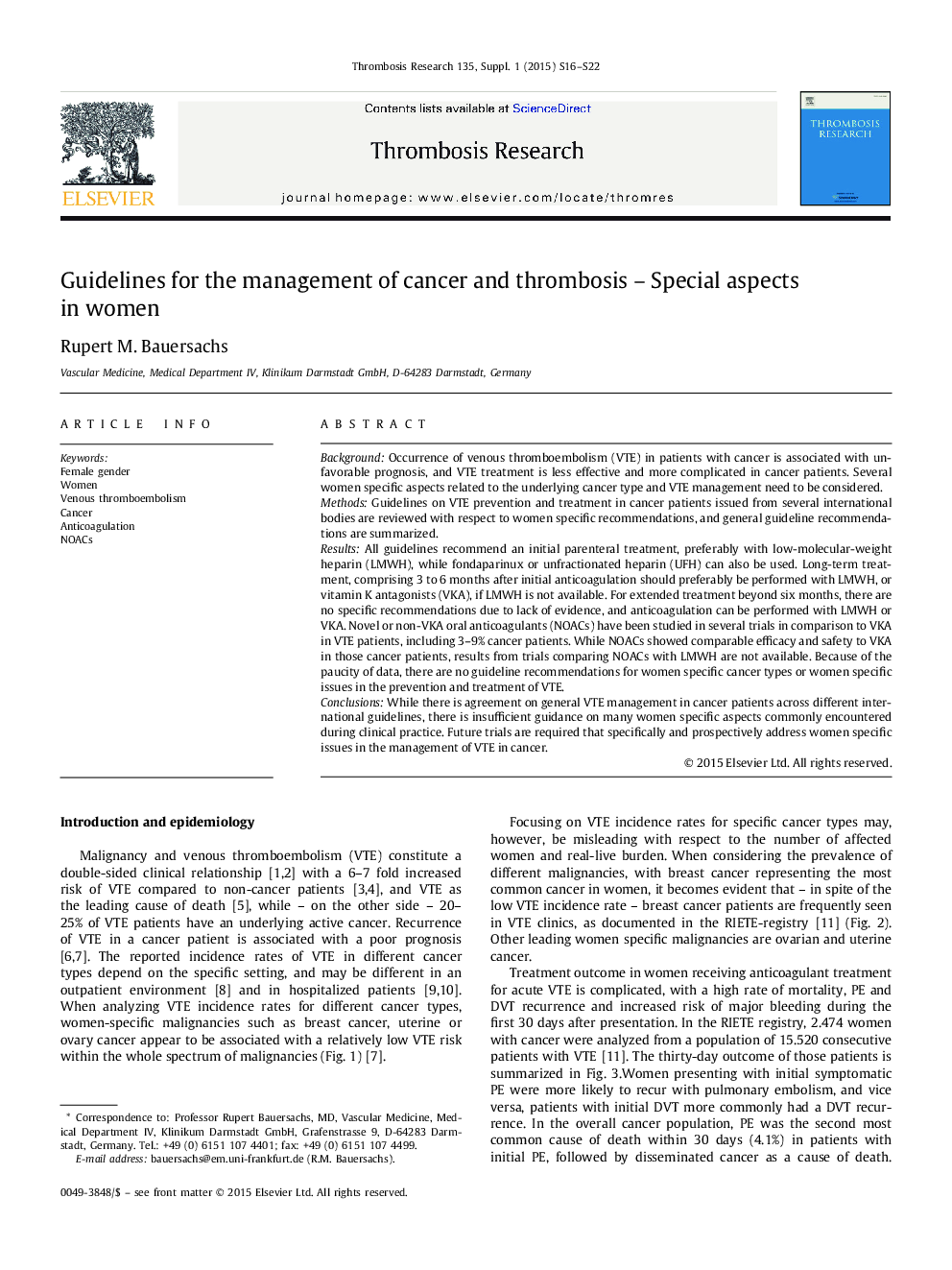| Article ID | Journal | Published Year | Pages | File Type |
|---|---|---|---|---|
| 3027394 | Thrombosis Research | 2015 | 7 Pages |
ABSTRACTBackground: Occurrence of venous thromboembolism (VTE) in patients with cancer is associated with unfavorable prognosis, and VTE treatment is less effective and more complicated in cancer patients. Several women specific aspects related to the underlying cancer type and VTE management need to be considered.Methods: Guidelines on VTE prevention and treatment in cancer patients issued from several international bodies are reviewed with respect to women specific recommendations, and general guideline recommendations are summarized.Results: All guidelines recommend an initial parenteral treatment, preferably with low-molecular-weight heparin (LMWH), while fondaparinux or unfractionated heparin (UFH) can also be used. Long-term treatment, comprising 3 to 6 months after initial anticoagulation should preferably be performed with LMWH, or vitamin K antagonists (VKA), if LMWH is not available. For extended treatment beyond six months, there are no specific recommendations due to lack of evidence, and anticoagulation can be performed with LMWH or VKA. Novel or non-VKA oral anticoagulants (NOACs) have been studied in several trials in comparison to VKA in VTE patients, including 3–9% cancer patients. While NOACs showed comparable efficacy and safety to VKA in those cancer patients, results from trials comparing NOACs with LMWH are not available. Because of the paucity of data, there are no guideline recommendations for women specific cancer types or women specific issues in the prevention and treatment of VTE.Conclusions: While there is agreement on general VTE management in cancer patients across different international guidelines, there is insufficient guidance on many women specific aspects commonly encountered during clinical practice. Future trials are required that specifically and prospectively address women specific issues in the management of VTE in cancer.
